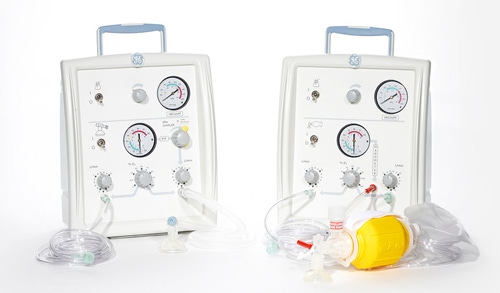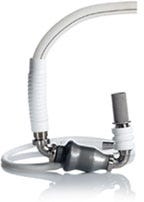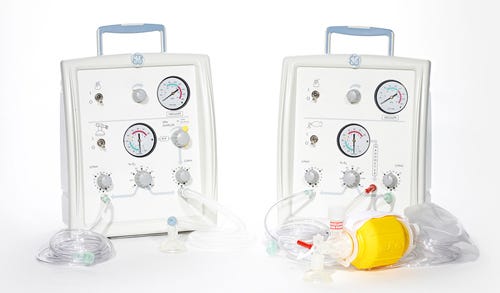9 Ways Medical Devices Fail
March 31, 2014

Medical device recalls appear to be growing at a slower pace than the device industry itself. But when they do happen, they can produce tragic, even deadly, results for patients.
MPMN asked members of the LinkedIn Medical Devices Group why device failures happen, receiving nearly 50 answers to date ranging from inexperienced startup companies to plain old human error.
Here are nine direct quotes from the discussion that each highlight a way medical device failures can happen, along with some insights from MPMN:
1. Startups with Limited Expertise
"Start-ups in particular ... need to identify/recognize their shortcomings in terms of managerial skills at different stages of the development. This is especially true if a device company is spun-out from an academic institute and is run by people inexperienced in getting sufficient and timely [financing] in place, people with inadequate technical and project management skills, and people with no understanding of marketing and product launch. Projects can fail at any of these stages. Of course you can (very selectively and very carefully) outsource many of these aspects --especially technical development and project management. It's easier to identify how things can fail than it is to say how they will succeed. If it was that easy we'd all be doing it!!"
--Greg Smith, business development director at Integrated Technologies Ltd.
MPMN: An MD&M Minneapolis seminar last October hit on a similar theme: Lack of materials knowledge is an issue among medical device startups, and it is going to hurt them down the road, says Mark Breyen, senior director of core technologies at Medtronic.
2. Plain Old Human Error
|
HeartMate II, as shown on Thoratec's website |
"Human error is likely the leading cause of failure; either the operator failed to use the device correctly, or the manufacture failed to realize that the operator was going to use the device incorrectly. A good example is of this is took place in the early 1990s. Several manufactures came out with pulse oximeters. Unfortunately, more than one manufacture used a round 9-pin patient probe connector. However, the manufacture's used different wire configurations. This resulted in several patients receiving burns on their finger at the site of the red LED. The human failure occurred when the manufacture failed to use a unique locking/attachment system for the patient probe AND human failure occurred when medical personnel switched the probes between units manufactured by different companies."
--Joseph Mandell, equipment planner at TEAM Integrated Engineering
MPMN:This issue can even extend to instructions, as demonstrated by two medical device failure issues that recently caught the FDA's eye.
Thoratec Corp. issued an urgent safety advisory over four patient deaths related to its HeartMate II left ventricular assist device (LVAD). No products need to be returned because the deaths and serious injuries were not the result of device failure, but rather patients and caregivers who were unable to understand instructions. Meanwhile, the FDA is warning that a Greatbatch Medical Orthopedic surgical tool could cause serious injury or death because it came with inadequate sterilization recommendations.
3. Not Employing Human Factors Research
"Personally, I used almost all insulin pumps available on the market. Recently, I have switched to t:slim insulin pump from Tandem Diabetes Care. They developed insulin pump based on intensive research studies by using human factor research. ... I'm using this pump for over seven months and no problems so far. I was involved in focus group and surveys with development of new version of medical devices (insulin pumps). ... Every company, which is planning to develop new medical devices, MUST switch to human factor studies."
--Eugene Kaganovich, founder at wellness4diabetics.com, advice4diabetes.com, medicalchartplus.com
MPMN: Look up the definition of human factors research on Wikipedia. It seems pretty involved: "Human factors and ergonomics (HF&E) is a multidisciplinary field incorporating contributions from psychology, engineering, biomechanics, mechanobiology, industrial design, graphic design, statistics, operations research and anthropometry."
Still, it might be worth the effort, especially if it enhances ease of use and prevents failures. The FDA appears to have taken this position in the past.
4. A Bridge Too Far When It Comes to Errors
"Medical device failures are really system failures. The surgeon didn't read the instructions for use. The checklist was not followed. The device was improperly maintained. The device was improperly stored. The nurse input the wrong settings. The cleaner didn't properly clean the room and left infectious material behind. The disposable device used was out of date. The switchover at a shift change didn't communicate the vital information. A clinician installed the tubing incorrectly. The clinician did not fully comprehend the physiology of the procedure. And someone got hurt. In each one of these cases, the 'failure' was the last event in a series of events that led up to the final 'failure.' It is encouraging that the medical community is starting to make checklists standard procedures that are always followed, to use root cause analysis find the process and procedural errors that led to 'failures,' to say, 'I am sorry,' and own up to the errors that culminated in the final failure."
--Albert de Richemond, consulting engineer at Consulting Engineers and Scientists
5. Lack of Good Manufacturing Practice
"Some history from the FDA's early 1980's 16-page document entitled, "Device Recalls: a Study of Quality Problems" [HHS Publication FDA 90-4235 (January 1990)]. ... The work was published by the FDA's CDRH and covers Medical Device recalls from October 1983 to September 1988. 3,144 recalls were done in the five-year period, and 1,664 Quality problems were identified. The root causes of these 1,664 problems were grouped into four categories - one was GMP (780 instances) and another was Pre-production (Design, Components, Software, Package, Label) a total of 724 instances plus some fewer cause types to total 1,664."
--Daryl Mullins, project manager, program manager, expertise in lean, scrum, PMBOK types
MPMN: Good Manufacturing Practice, or GMP, is apparently still an issue three decades later. For example, GE Healthcare is recalling a host of infant resuscitators from the past five years over a serious error during the assembly process. The FDA announced Feb. 28 that it has designated the recall as Class I. FDA officials think the resuscitators could potentially seriously injure or kill infants because oxygen and air wall inlet fittings on their back panels were reversed during assembly.
|
The Giraffe Stand-alone Infant Resuscitation System, as shown on GE Healthcare's website. |
6. A Poor Corporate Culture Inside Device Makers
"When Toyota had a rash of recalls a few years ago, one theory was that, despite its legacy as a leader in quality culture, the company had in fact morphed to a culture where bad news was getting ignored. In the financial system meltdown a few years ago, one problem that was found in many companies was a quick dismissal or minimization of risk (or even identifying the risk-creator as a hero). Similarly, many device failures can be traced to causes that were known or knowable, when they could have been addressed much more simply economically, but the manufacturing culture did not value paying attention to that risk. ... This issue is being discussed at leading hospitals, such as Johns Hopkins. They recognize that risks that lead to massive impact, such as a problem with a commercial airplane, get addressed immediately, but that risks that may only impact one or two patients get minimized, even if the aggregate of the risks that individually could only impact a few patients may collectively result in hundreds or thousands of patient issues each year."
--Ian Nemerov, quality and regulatory affairs expert
7. Reusing Devices That Should Not Be Reused
"A lot of things which are critical are deemed to be single-use items, just because of the problems with failure that can occur if you reuse them. That causes a lot of discussion as reuse is constrained by FDA regulations, but some hospitals do it anyway, against manufacturer's stated use conditions. In other words, the users can beat any great product until it 'dies,' whether it is reusable or not. In the end you need a very experienced engineering team to get close to a 'failure-proof' product, but you will never achieve it. There is value in being a 'grey beard' in complex design choices."
--Burrell (Bo) Clawson, president of ColonTest LLC
MPMN: One alarming issue involves U.S. health providers seeking to save money by having supposedly single-use medical components sterilized and reprocessed so that they can be reused, according to Len Czuba, president of design firm Czuba Enterprises (Lombard, IL). Czuba advises anyone getting a medical procedure to ask their health provider whether they're being exposed to a reprocessed medical device. "If anyone uses reprocessed devices, patients should be made aware of it," Czuba says. "There have been cases where the tip of a balloon catheter has broken off. They have had to go in and open up the patient and fished out the lost piece."
8. Not Involving the Doctors
"Having been inundated with approaches from IT specialists, all of whom claim to have developed the latest innovative 'app' for patient self diagnosis/monitoring/treatment, none seem to have included a clinician or medical devices expert in the development. That's a sure formula for failure and demonstrates inadequacy in product development which any potential investor would question--that's before any submission to the regulatory bodies."
--Gordon Millar, owner at Virtu~Pack
9. Not Keeping Other Cultures in Mind
"In [Latin American] countries, labels must follow certain local norms. These are not all the times complied or correctly assessed in customs. Then, we ended up with labels that are difficult to understand for the final user--becoming a possible cause of misuse. My suggestion would be to bolster the risk assessments not only for the country of origin but for all the other markets the manufacturer is going to sell. In other words, if manufacturers updated their risk assessments considering the new markets they get into, less human errors worldwide would be the cause of failures. ... I have [gone] through many MRI manuals that are quite difficult to understand in Spanish. Therefore, service engineers must struggle with the English versions (if they are not English readers) or with the Spanish rough translations."
--Miguel Angel Torres Tello, biomedical engineer
Related content
7 Recent Medical Device Failures Catching FDA's Eye
Medical Device Recalls Growing at Slower Pace Than Industry
Chris Newmarker is senior editor of MPMN and Qmed. Follow him on Twitter at @newmarker.
About the Author(s)
You May Also Like




